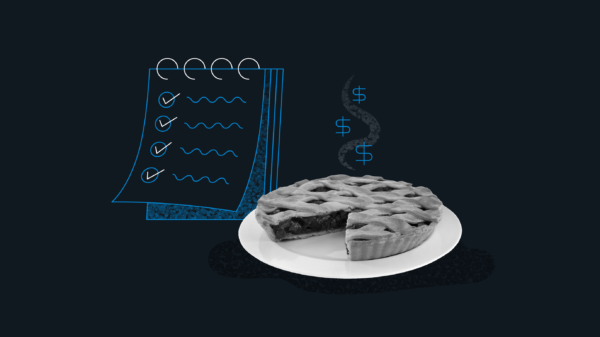Aug 28, 2019
How To Save Big with Digital Coupons
From plugins to mobile apps, shopping with coupons can save you money.

“Why was our delivery order so cheap?” I ask.
“I had $5 off on Seamless,” my husband says.
I make a mental note—again—to ask him how he amasses all this credit from every site he frequents. And then I forget about it. And when it’s my turn to make an online purchase, I panic at the last minute, go to RetailMeNot, try six expired coupon codes, and then hang my head in defeat.
There are online retailers I proudly take advantage of, ones that send frequent coupon codes via email, such as EyeBuyDirect and my guilty pleasure, Old Navy. When I plug in a coupon code and it works, my heart soars. I love the feeling, and want more of it.
And apparently, with some extra effort, I could be getting this endorphin rush to the tune of $122 saved per month.
Plugins, email, and newsletter coupons
A new study by CouponFollow shows the average American household can save $1465 per year by taking advantage of trends in digital couponing. If “digital couponing” sounds intimidating or nebulous, fear not: Head of Retail Relations at CouponFollow, Tiara Rea-Palmer, says each type of coupon is easy to use.
First, there are plugins like Cently, Honey and Wikibuy. A plugin is a web browser extension, which you can download from Google Play or Apple for free to aggregate coupons from all over the internet.
“It sits innocuously in the background until you’re on a website where there are coupons,” Rea-Palmer said. The plugin automatically applies the coupon code at checkout.
Second, which is what I was already doing, is signing up for email lists from preferred retailers. According to Rea-Palmer, by signing up for newsletters, you’re guaranteed a coupon code at some point.
Third is to check sites like CouponFollow, Hip2Save, and Coupons.com for brand-specific coupons.
By using these methods, the study found, the average couponer save 6.4 percent of household spending per year.
Real savings
Additionally, CouponFollow found the average purchase price dropped a whopping $30 when matched with a coupon code. And a full 40 percent of online purchases were matched with a coupon—a much higher rate than when I fumble my way through expired codes on RetailMeNot.
Some people take digital couponing even farther. Friend of a friend, Katherine Quick, a New Jersey resident with two children and five total in her household, is an online and mobile coupon expert. By putting in four hours a week (two of at-home couponing, meal planning and organizing, and two shopping at physical stores that match her digital coupons), she saves significantly more than $122 each week.
Quick said she got into couponing while pregnant with her first child. She wanted to ensure money worries wouldn’t be a problem during her maternity leave, and soon found a blog called Living Rich with Coupons that aggregates deals for nine states. At ShopRite alone this year, Quick has saved $751.82. (Though, she noted, ShopRite has recently stopped allowing “stacking,” which means using coupons for both the manufacturer and retailer.)
That’s huge savings, especially considering CouponFollow’s study found that we haven’t even hit the biggest coupon season yet—October for the most coupons offered, and November for the biggest discounts thanks to Black Friday. (Aside from fall, April and May tend to have the most coupons.)
Mobile apps
So how can we be more like Quick, saving more cash than the average couponer and even getting some products for free? In addition to CouponFollow’s advice about plugins, emails, and websites, we can download mobile apps.
In particular, Quick recommends The Fetch app, Rakuten (formerly ebates) app, The Ibotta app and the ReceiptHog app. Most of these apps give you points for taking photos of your receipts—most likely to understand consumer purchasing trends—so as you accumulate points that can be converted to cash or gift cards, you’re also learning about your own saving and spending habits. Some also offer standard coupon codes.
When I spoke about this to my former couponer friend Carrie, she noted that it seems to be mostly giant, national retailers who offer deals. When Carrie was into coupons, she felt bad for not shopping local. “I was totally in a Domino’s cycle,” she said. “I hate Domino’s.”
But luckily, smaller brands have been catching on, according to Rea-Palmer. “It’s become a really popular trend,” she said. “For a smaller brand, it can help you get that up start.”
She noted many smaller apparel and makeup brands, such as Colour Pop, are offering coupons now.
As for me, I may never get to the expert level of Katherine Quick, but I can definitely spare an hour a week for coupon planning. My first step was updating a very old version of Ibotta on my phone, and finally signing up for Rakuten.
Related Articles

Saving vs. Investing: 2 Ways to Reach Your Financial Goals

The 2024 Financial Checklist: A Guide to a Confident New Year

9 Ways to Celebrate Financial Wellness Month

Budgeting for Young Adults: 19 Money Saving Tips for 2024

The Best Personal Finance Books on Money Skills, Investing, and Creating Your Best Life for 2024

What Is a Financial Plan? A Beginner’s Guide to Financial Planning




